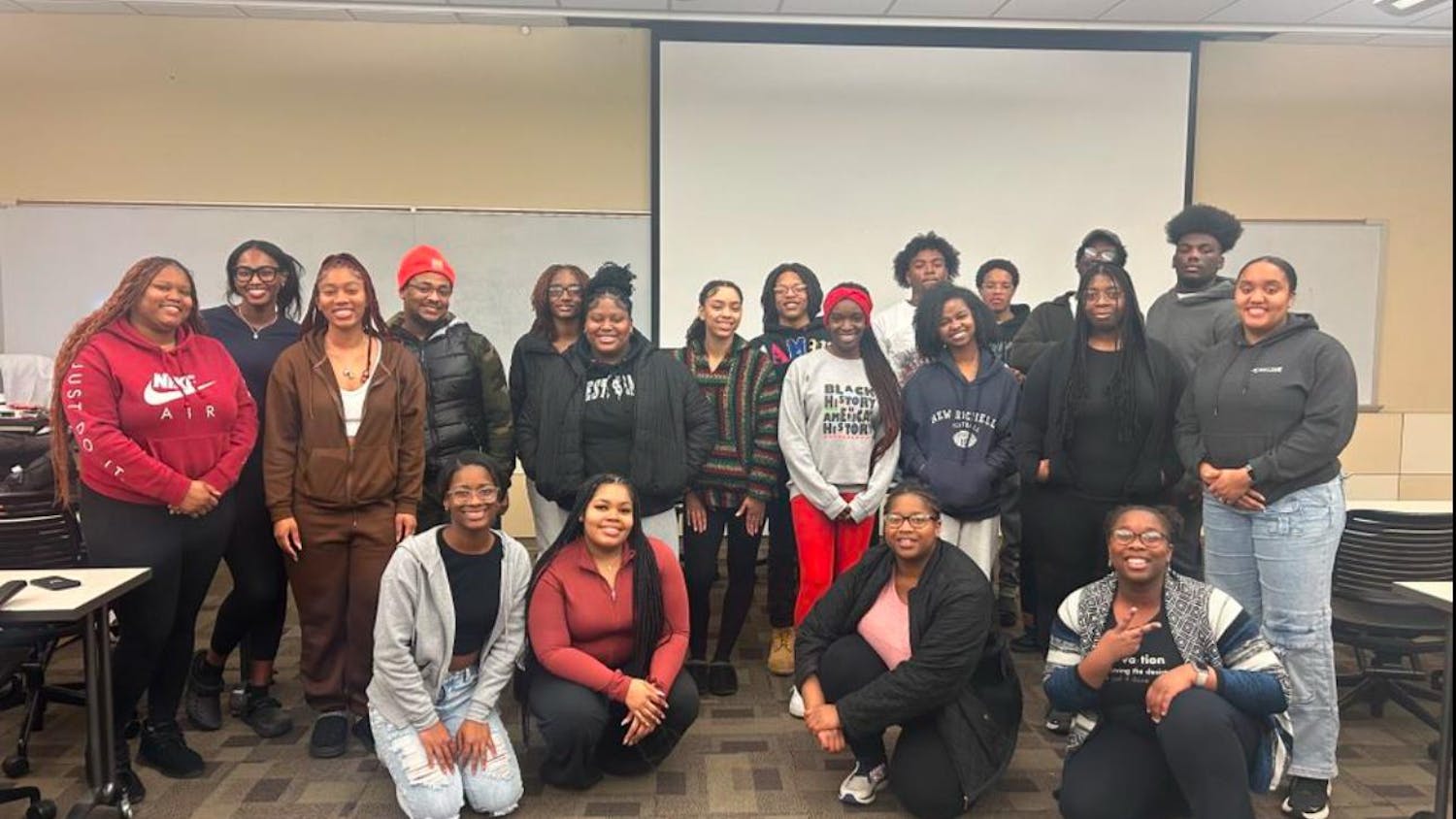Contact Tracing | Illustration by Kayli Thompson | The Wright State Guardian
As Greene County remains at a level 3 red alert, contact tracing amongst those individuals who test positive for coronavirus is a crucial step to mitigate the spread of this potentially deadly virus.
What does this mean?
A level 3 red alert places Wright State University (WSU) students, faculty and staff in the upper level of the Ohio alert advisory system and warns the community of very high exposure and spread rates, while also encouraging those in the county to limit daily activities as much as possible.
As of Dec. 4, the Greene County Public Health Department website reports 6,138 confirmed cases of coronavirus within the county.
Updated on Dec. 3, WSU’s coronavirus dashboard lists a total of 47 students and 12 employees with active coronavirus cases.
The Ohio Department of Public Health states that those who test positive for the coronavirus, must self-isolate for a minimum of 14 days with an exception only to seek medical care.

WSU contact tracing
WSU’s coronavirus health and safety protocols page states that, “Individuals who test positive for COVID-19 will first receive a phone call from the physician or care provider who ordered the laboratory test. The care provider then notifies the local public health department to begin the case investigation and contact tracing.”
At WSU, this contact tracing process is handled by the university’s Environmental Health and Safety (EHS) office, directed by Dr. Marjorie Markopoulos.
“The purpose of the call from local public health is to educate the individual about their exposure, ask the individual to self-isolate, and inquire about the daily activities on the days before testing. Individuals will be asked to report the locations they visited and all interpersonal interactions that occurred over the previous days,” says WSU’s website.
A close contact encounter is defined by the Centers for Disease Control and Prevention (CDC) as any individual who was within six feet of an infected person for at least 15 minutes starting from two days before illness onset or, for asymptomatic patients, two days before positive specimen collection until the time the positive individual is isolated.
Surviving the coronavirus
“My husband was sick first, then I just had a headache and some nasal drainage to start out,” said 56-year-old Ohio native Wendy Frady. “Over the next few days my eye sockets were hurting really bad, and I had a fever accompanied with loss of taste and smell.”
This was just the beginning for Frady, who said that the after effects of contracting the coronavirus can be just as scary as the initial shock.
“When you have the flu, it usually lasts for a few days,” Frady said. “This lasted for 2 weeks, and then I felt fatigued for another 2 weeks after, while also having terrible chest pains and pains in my left arm. It was to the point where I thought I might be having a heart attack. I was more nervous about my husband getting it though, because he has COPD. Thank heavens it did not get in his lungs!”
Frady, who works in the nursing home industry, says that she is surrounded by the virus and has seen the toll that it takes on the elderly in her community.
“There are cases everywhere and many, many deaths. I think the scariest part is that some people do not have any symptoms and are out passing it around unknowingly,” said Frady. “This virus is so unpredictable and different for everyone.”
Frady said that unfortunately in her case, little was done to investigate where her and her husband had contracted the virus, though the Public Health Department did require a two-week quarantine as well as continued mask wearing.
“No one called to investigate our cases, but we completed the required quarantine period and still make sure to wear our masks everywhere,” Frady said. “If you are feeling ill, don’t be afraid to get tested. Wear a mask and stay at a safe distance as much as you can. This is all we can really do.”
To view Wright State University’s coronavirus dashboard, visit: https://www.wright.edu/coronavirus/covid-19-dashboard
For more information on contact tracing from the CDC, visit: https://www.cdc.gov/coronavirus/2019-ncov/daily-life-coping/contact-tracing.html
To keep up-to-date on the Greene County Alert Advisory System, visit: http://www.gcph.info/
For the latest Ohio Department of Public Health quarantine procedures, visit: http://www.gcph.info/files/announcements/attachments/1072_COVID-19_Guidance_Quarantine.pdf
Editor's note: WSU Director of Environmental Health and Safety, Dr. Marjorie Markopoulos was contacted for comments on contact tracing but was unable to comment at this time.












